ShoeRealism
Service design for the sustainable circular fashion
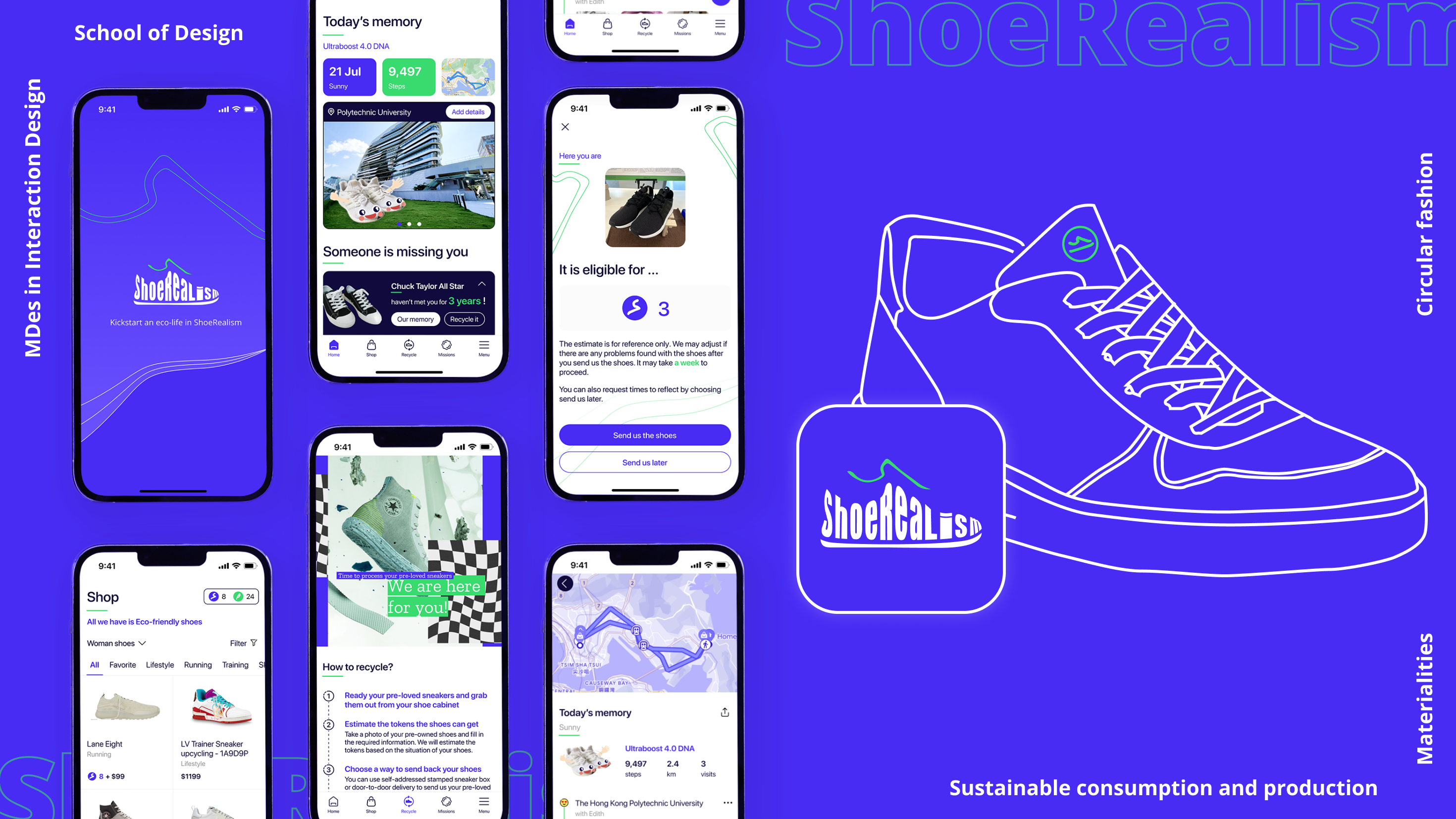
Project Structure
SD5530 Demonstration Project
2 months
Team of 2
Edith, Karrie (me)
- We divided the work equally in every stage
- Edith focused on more fashion-related contents
- I focused on more prototyping and visualizing the contents
Research Plan
Our design process is divided into four main phases, which aim to narrow down and refine the design direction through interviews, co-design workshops, and iterative user testing.
Background Research
Circular fashion
COP26 Climate Change Conference has proposed four goals illuminating the prerequisite of decarbonization, urging the fashion endeavors to work together with the commitment of climate action in the new era. The fashion industry is suggested to focus on reducing greenhouse gas emissions and making real progress more sustainable. There is no doubt that circular fashion is a trend and is a must.
Opportunity areas on product take-back
The fashion brands conducted a case study about implementing a take-back system similar to a circular fashion subscription-based service. The product is taken back and will be reclaimed into fiber for producing one of the collections.
However, the limitation of product take-back is low consumer awareness and lack of consumer acceptance. We initially examined if circular subscription-based service, as one of the novel approaches occurring recently, may help to solve the limitations of the current in-used approach on product-take-back and uplift customers' experience with product take-back programs.
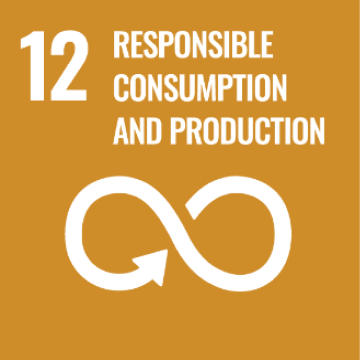
In-depth interview
The interview was targeted to explore approaches to encourage product take-back and the factors resulting in low customer motivation. We aimed to better understand customer shopping behaviors while exploring users’ feelings, desires, or concerns on the principle of circular subscription-based service.
Procedures
- Customers’ existing recycling and shopping experience
- Understanding and opinion on the existing recycling system
- Understand customers’ existing recycling and shopping experience
- Introduce new technologies and explore new ways to promote product take-back
Analysis
We interviewed nine fashion-conscious consumers. We narrowed down the target user to the low sustainable-consciousness hedonic customer and aim to turn this group of users into the high sustainable-consciousness hedonic customer.

The interview results have gone through a 3-step analysis and synthesis to generate the final design criteria. The responses collected from the interview have been consolidated into raw data, followed by an empathy map analysis aiming to identify customers’ desires and barriers to initiating sustainable practices on fashion consumption. Then, we came up with three main design criteria.

Raw data consolidation
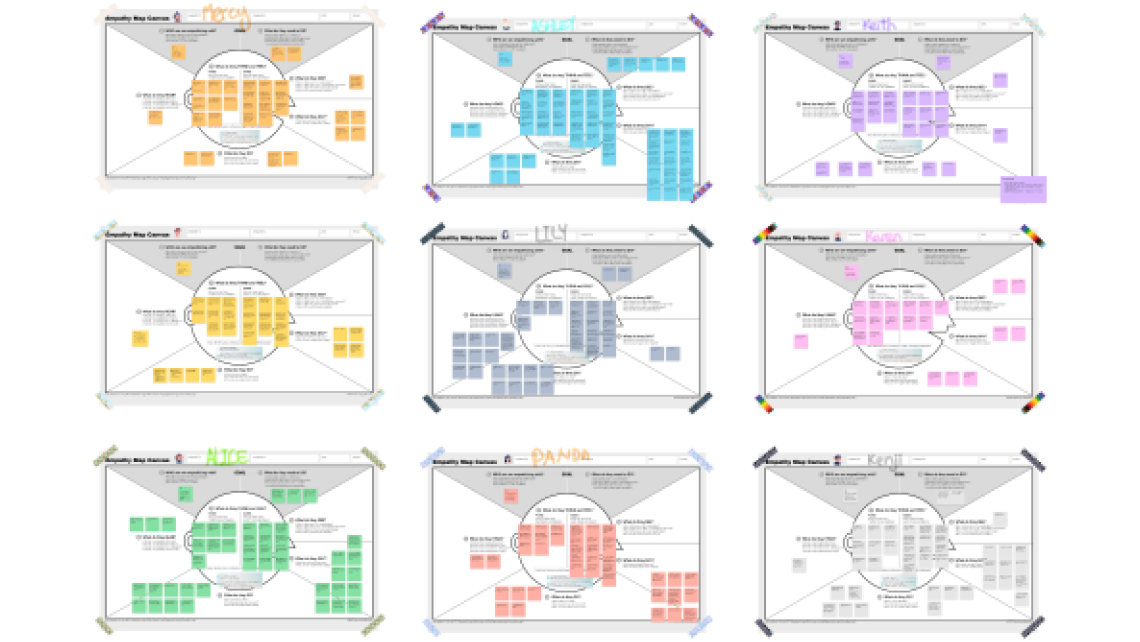
Empathy map analysis
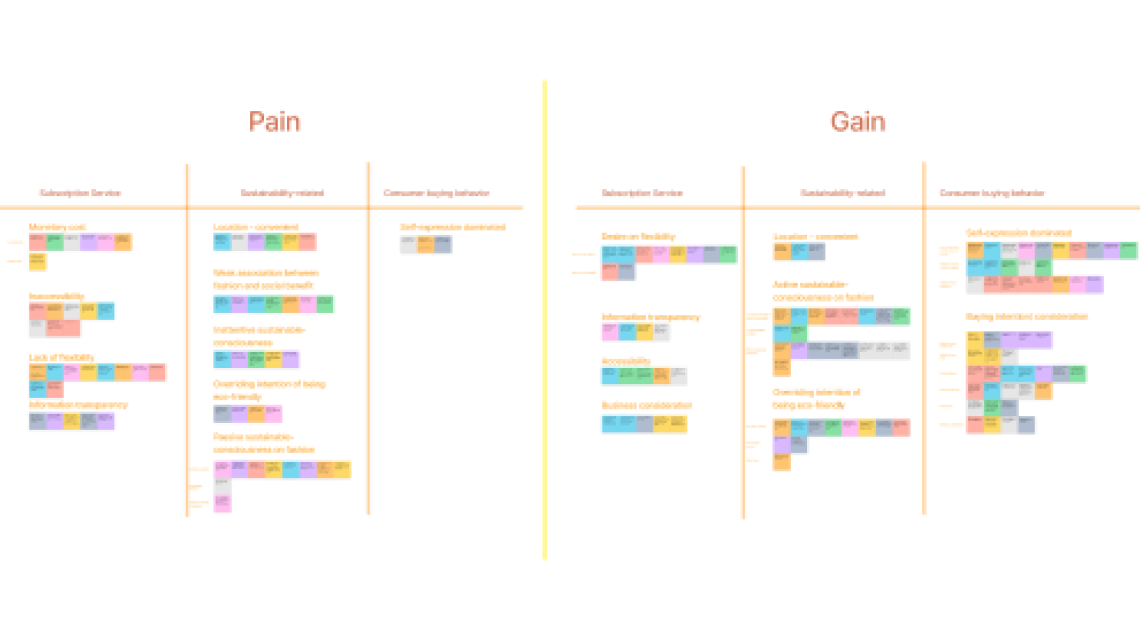
Affinity mapping
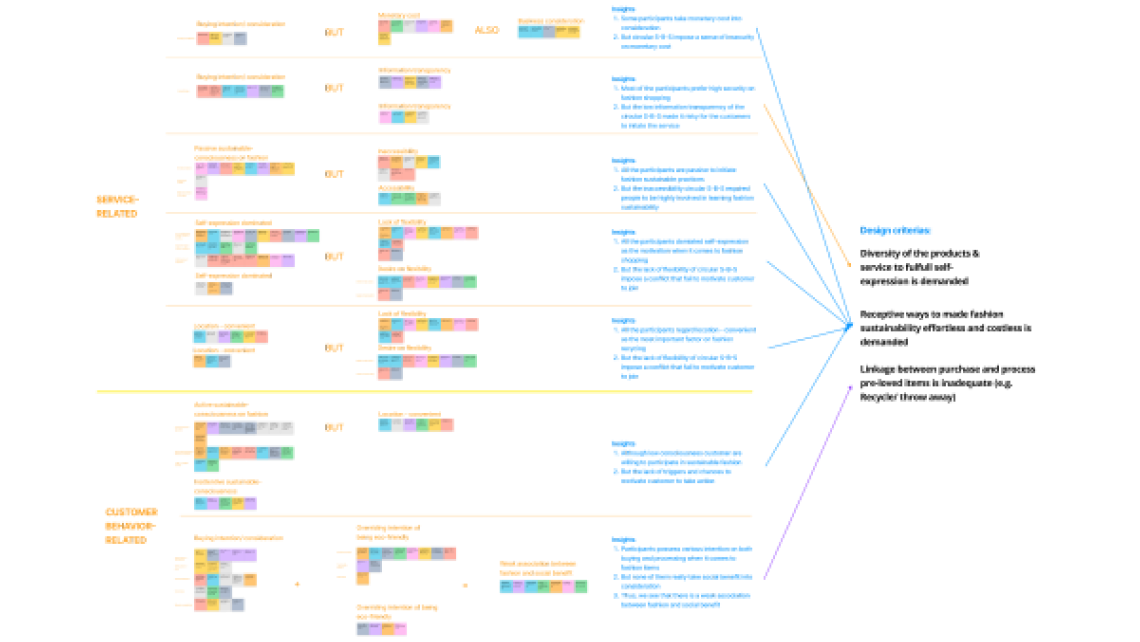
Design criteria
Design criteria
- Effortless - Strive for approachable ways to make product take-back costless
- Associated - Strengthen the linkage between purchase and product take-back
- Diverse - Diversify products and services to fulfill self-expression
Materiality
Dourish (2011) introduced the concept of materialities in digital objects by examining the specific materialities that certain digital objects exhibit, including five main considerations. It claims that digital goods may also consist of symbolic meaning in terms of
- personal histories and local significance
- as possessions
- as objects of aspiration
- as demonstrations of status
- as elements of interpersonal
- as projections of self-identity
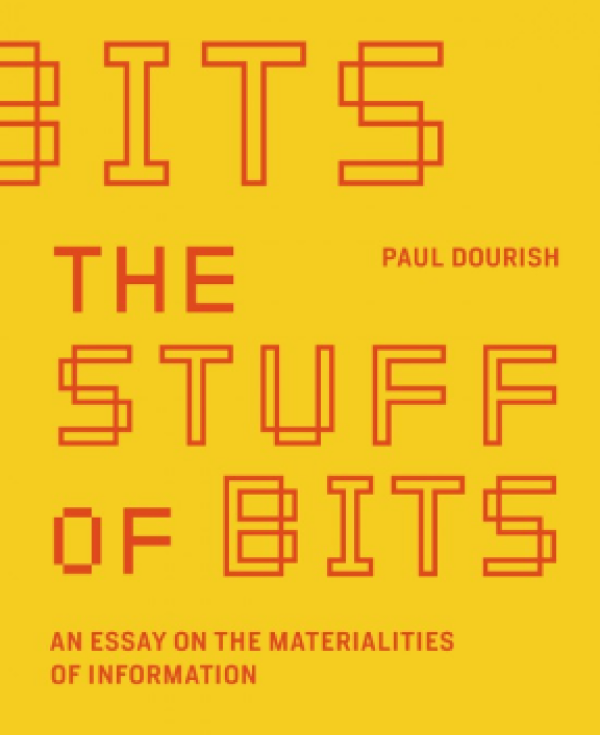
We found that some interviewees pointed out that they would purchase shoes with unique meanings to them. They could remember their experience with the shoes and may feel pity for recycling them. Thus, we see the possibility of using personal histories and memories as the potential materialities to be added in digital form to motivate users to detach from the physical items.

Design direction
We came up with our initial design direction, which mainly focuses on enriching materialities on digital assets to compensate the cost of users who lost product ownership when they recycled the products. The initial design direction will also include the token system, which acted as a supplementary to fulfill the reminding design criteria.

To detach from physical possessions

To link up the behavior of purchase and product take-back / recycle
Co-design Workshop
We conducted a co-design workshop to understand the memory linkage between customers and their shoes, assess physical and digital materiality in shoes, and co-create the initial concept.
Participants
We hold three rounds of co-design workshops in which each round will include 2-4 participants.
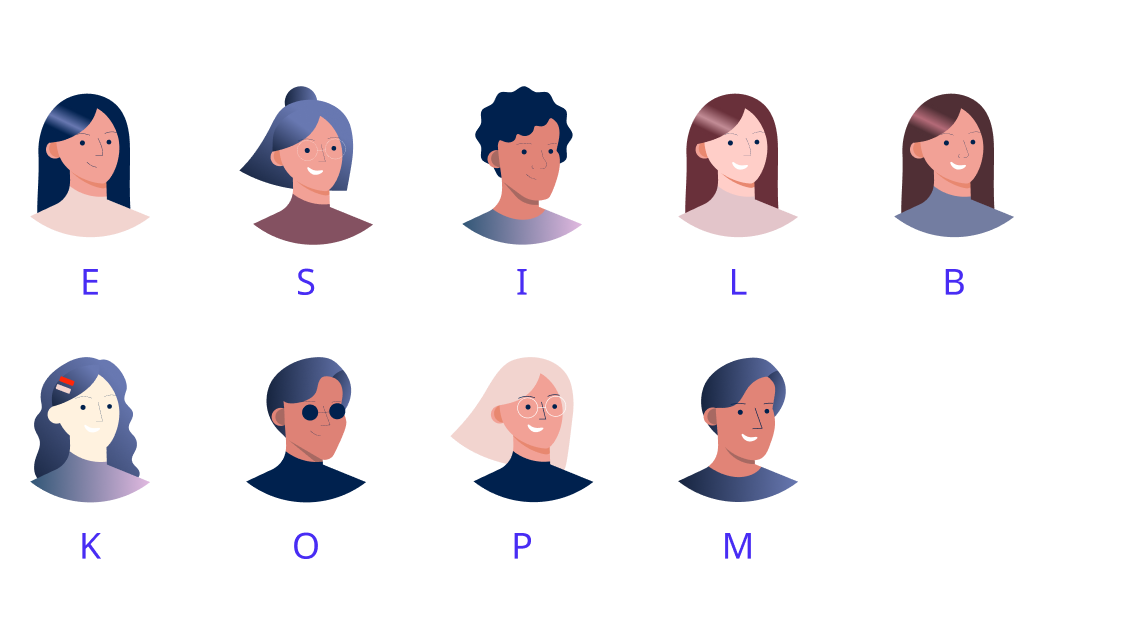
Session 1 - Sharing
Share their experiences and memories with their shoes as a warm-up to bring out the topic for our project. The three themes about their memory of the shoes are:
- the most often worn
- have not been worn for a long time but still keep at home
- most memorable
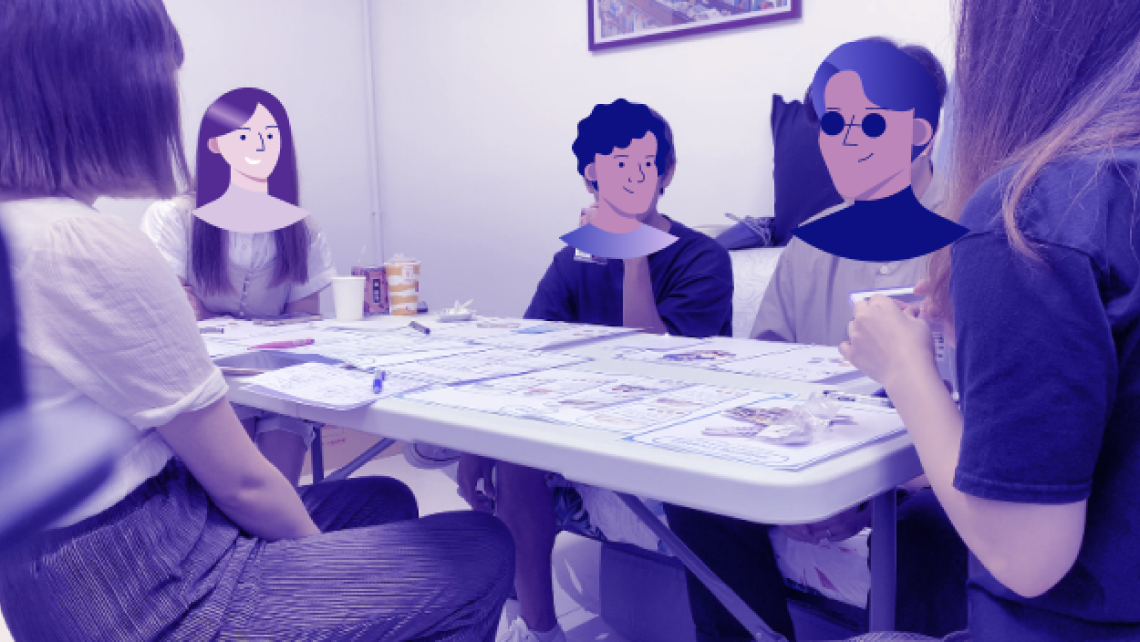

Session 2 - Role play
Participants role-played as the subscribers of the refined circular subscription-based service through a paper prototype. As such, we can assess the accessibility and feasibility of the refined service by observing the participants’ actions and emotional responses while asking follow-up questions.

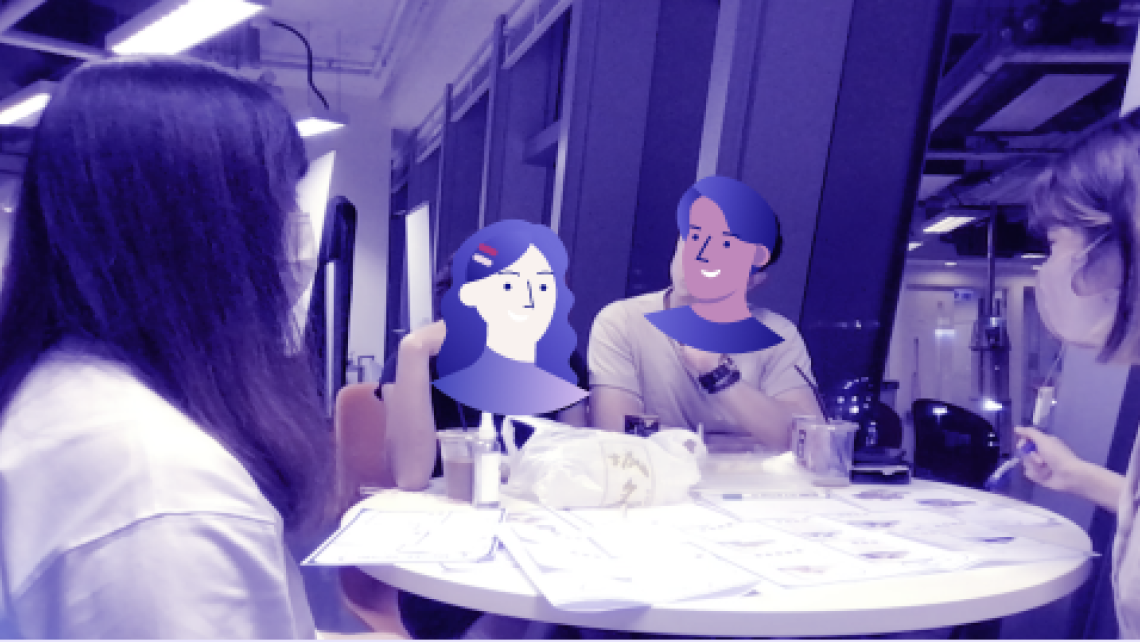
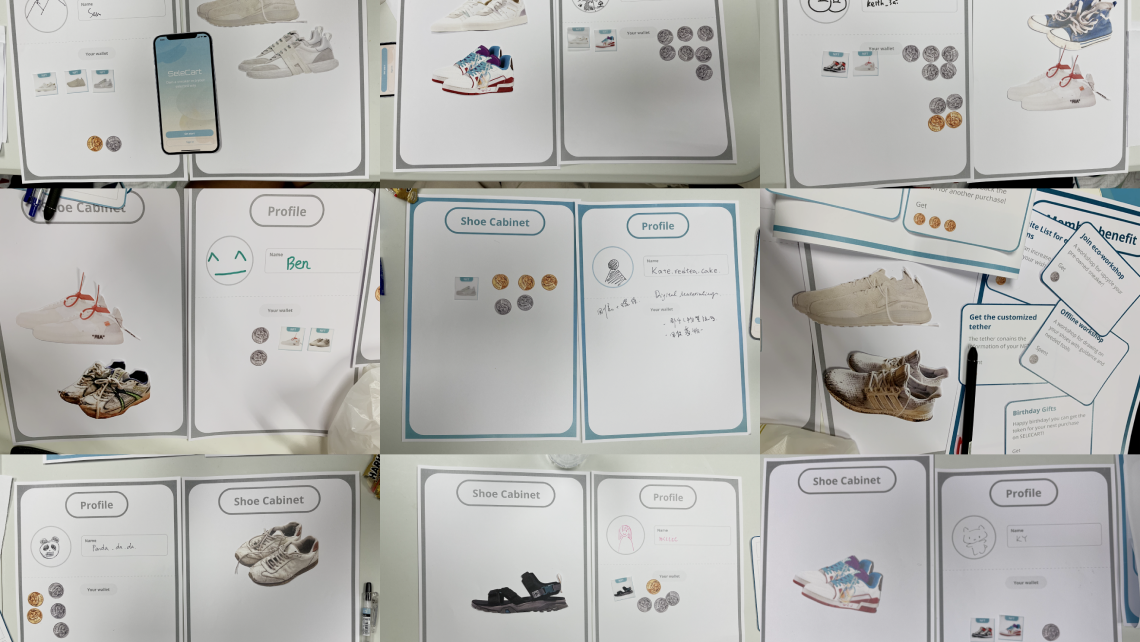
Session 3 - Co-design
We briefly introduced the idea of using memories as the materialities being added to the digital shoes to compensate for the cost of the loss of product ownership to the participants and invited them to brainstorm the idea with us or comment on it.
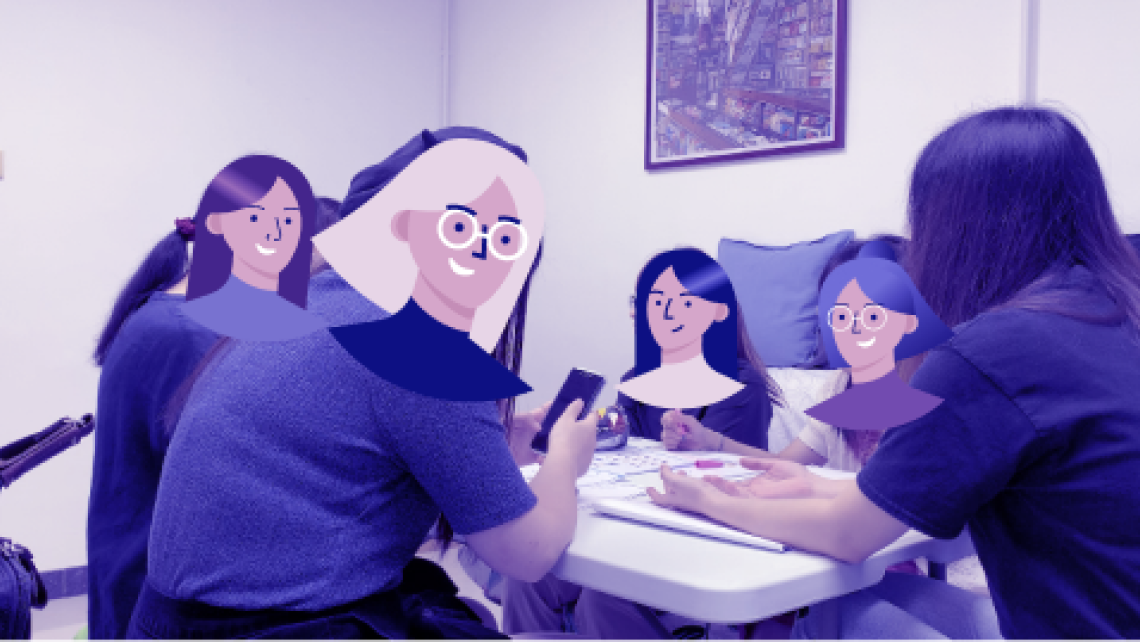
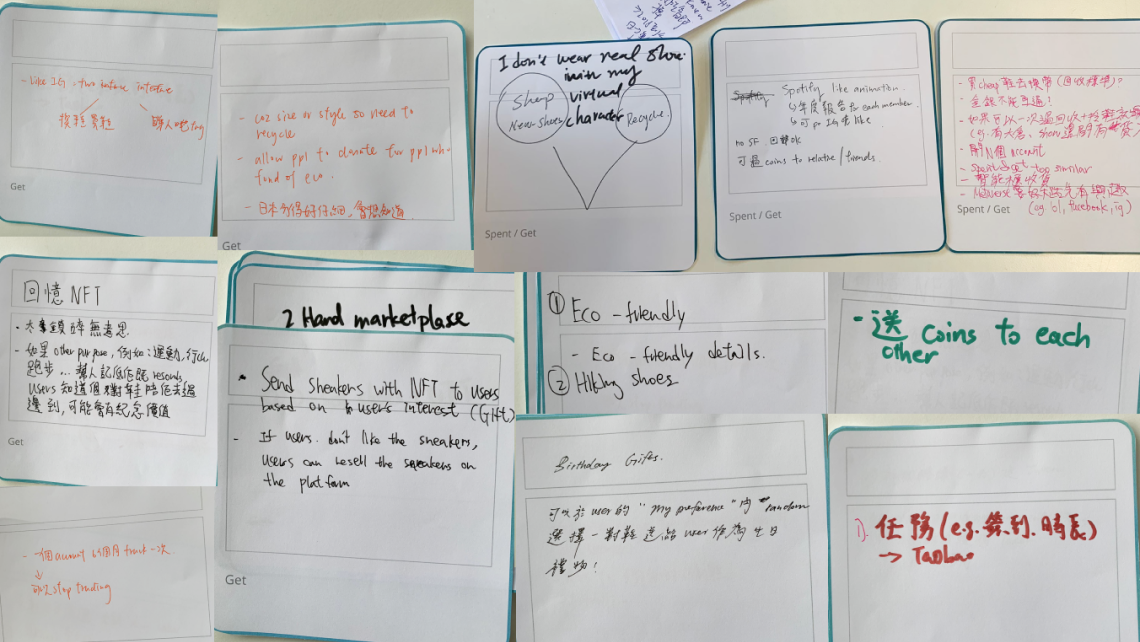
Insights

Most of the participants describe their shoes with shared experiences, such as the special events they have with the shoes. It proved that using personal histories and memories as the potential materialities to be added in digital form can motivate users to detach from the physical items. The workshop revealed that users are willing to discard a pair of pre-loved shoes once they receive the replacement, such as a digital form of the memories with the shoes. Therefore, it validates our initial design concept of enriching materialities on a pair of digital shoes through recording personal memories with the shoes to compensate for the cost of the loss of physical ownership for product take-back.
Iterative User Testing
We hold three rounds of user testing to refine our design.
1st user testing
Invited participants to record data for a special event or a day they hang out with several existing apps. We will then visualize the data on ShoeRealism app and invite participants to test the prototype. Also, an AB test was conducted for the sensor part with a 3D-printed tag sensor prototype to assess their acceptance level toward the sensor's design.
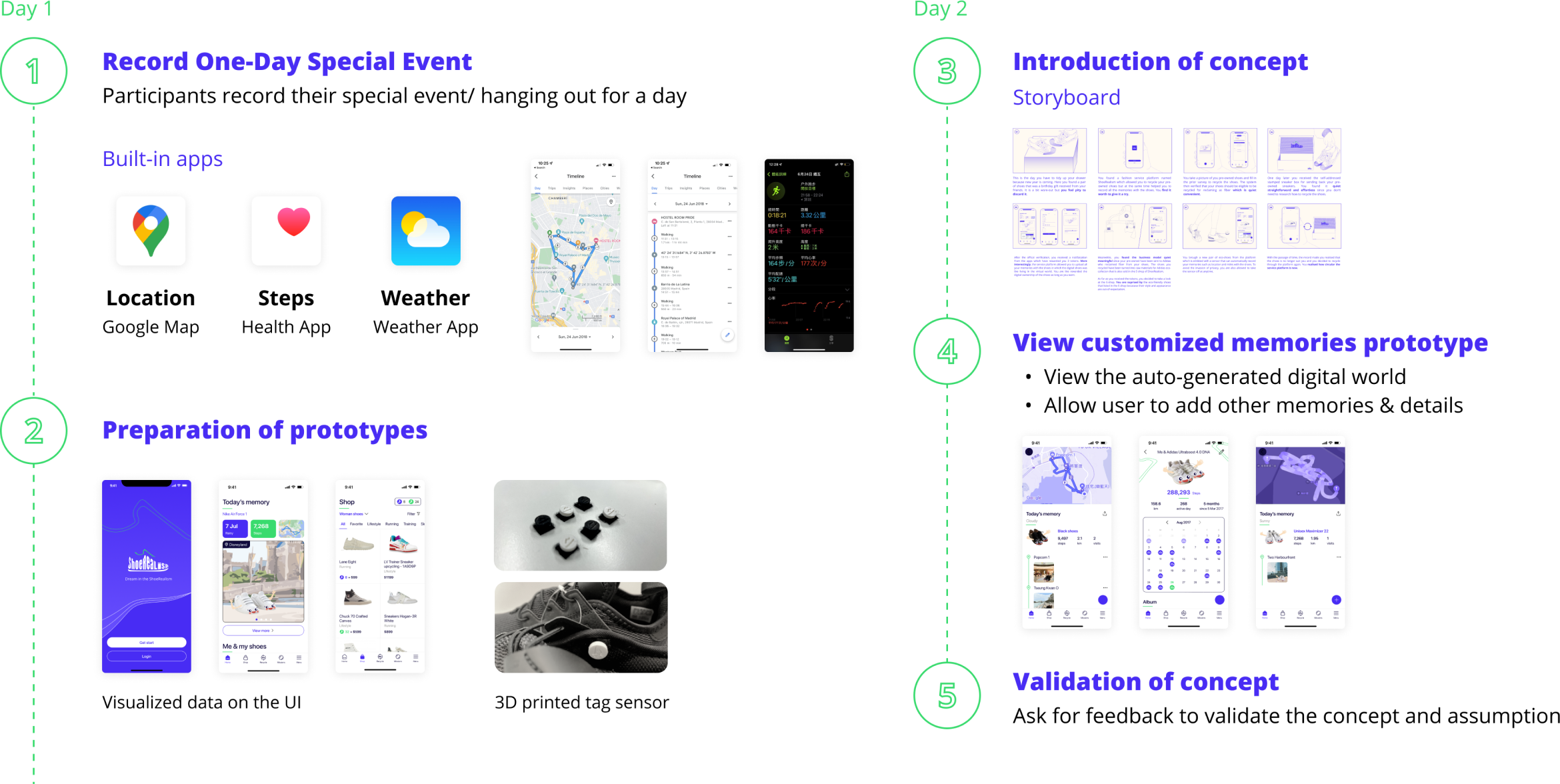
- Strive for a balance between privacy and convenience to record activities is demanded
- The memories feature probes different meanings to the user while reflection on detachment should have to be emphasized
- Focus on providing a space for reflection on consumption where users can choose to recycle the pre-owned shoes or to fully utilize the shoes before recycling it
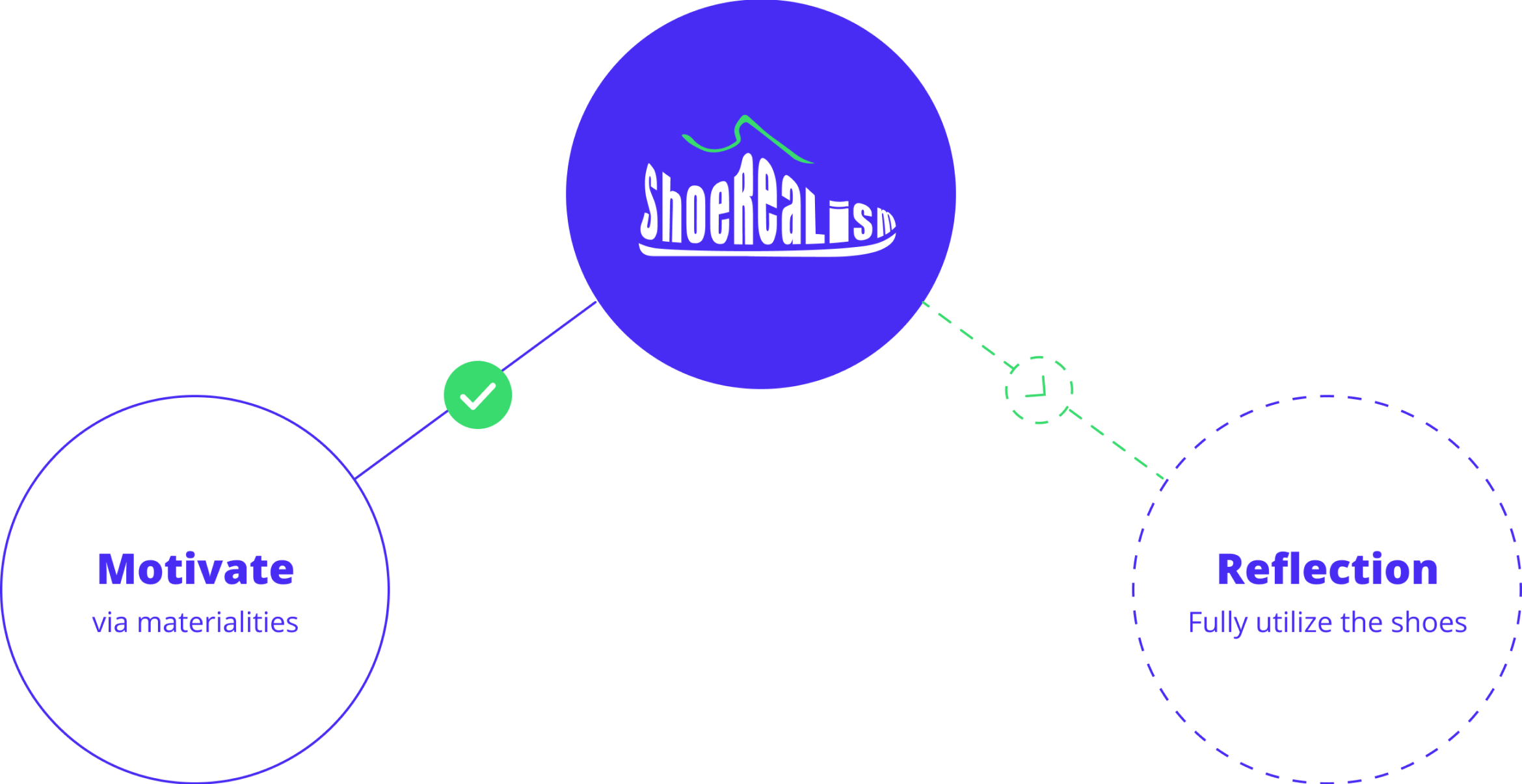
2nd user testing
Aiming to let the participants experience the sensor part for recording memories and find out which is suitable for our design.
We prepared two high-fidelity prototypes that users can interact with. One is an RFID-embedded shoe cabinet for automatically recording, and the other is a pair of RFID-embedded shoes that record the data manually.
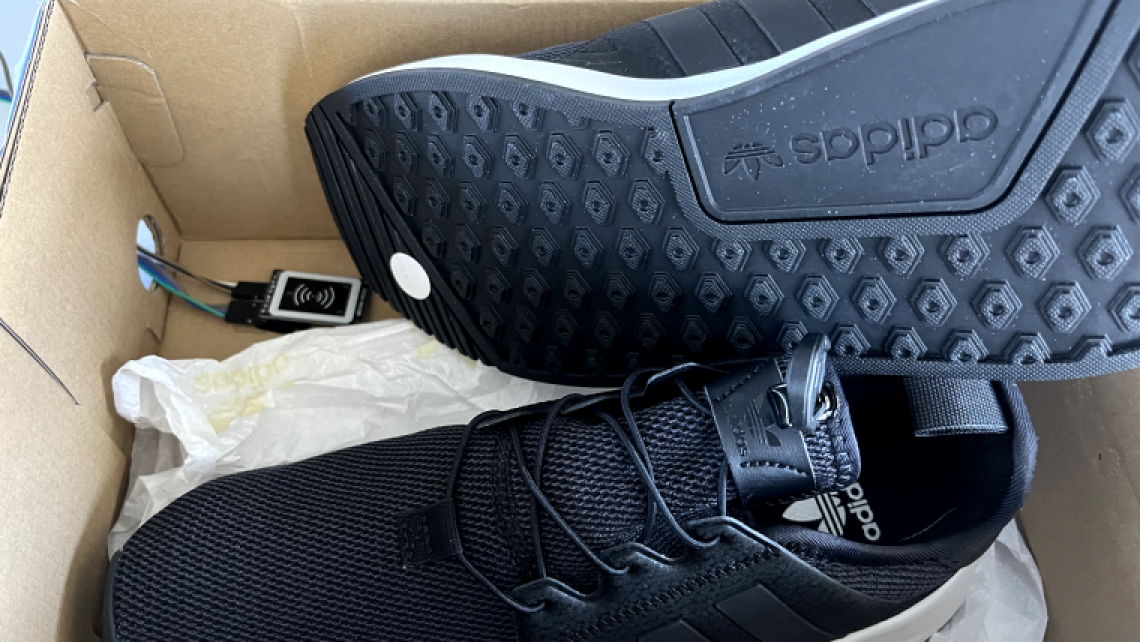
Automatically recording
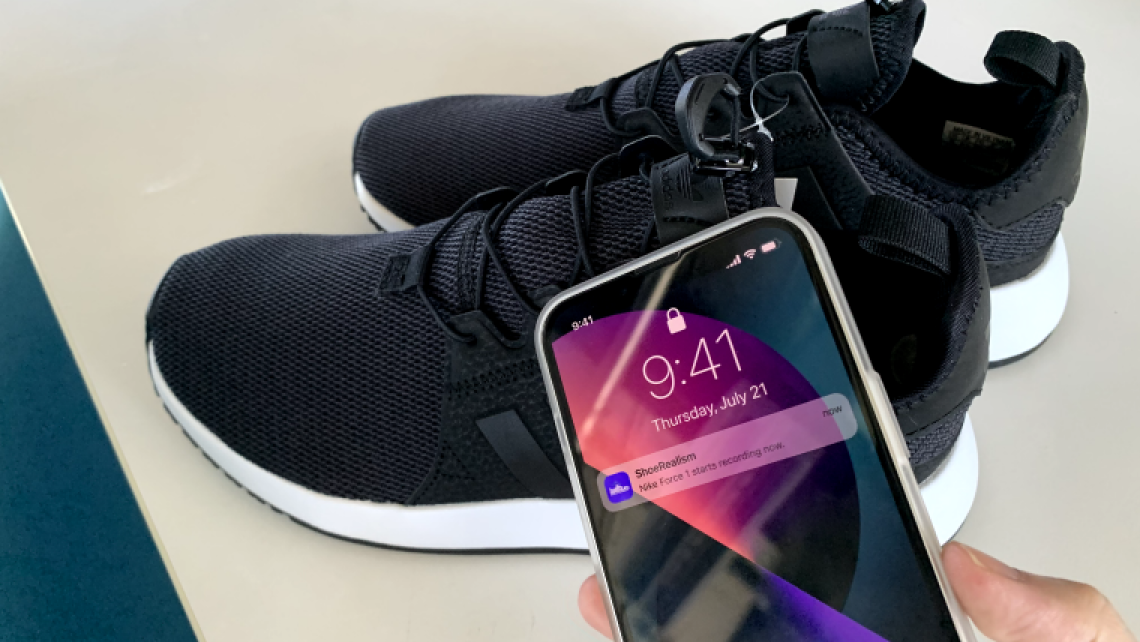
Manually recording
Convenience is preferred when it comes to “Record this moment” where avoiding missing recording something meaningful is highly preferred
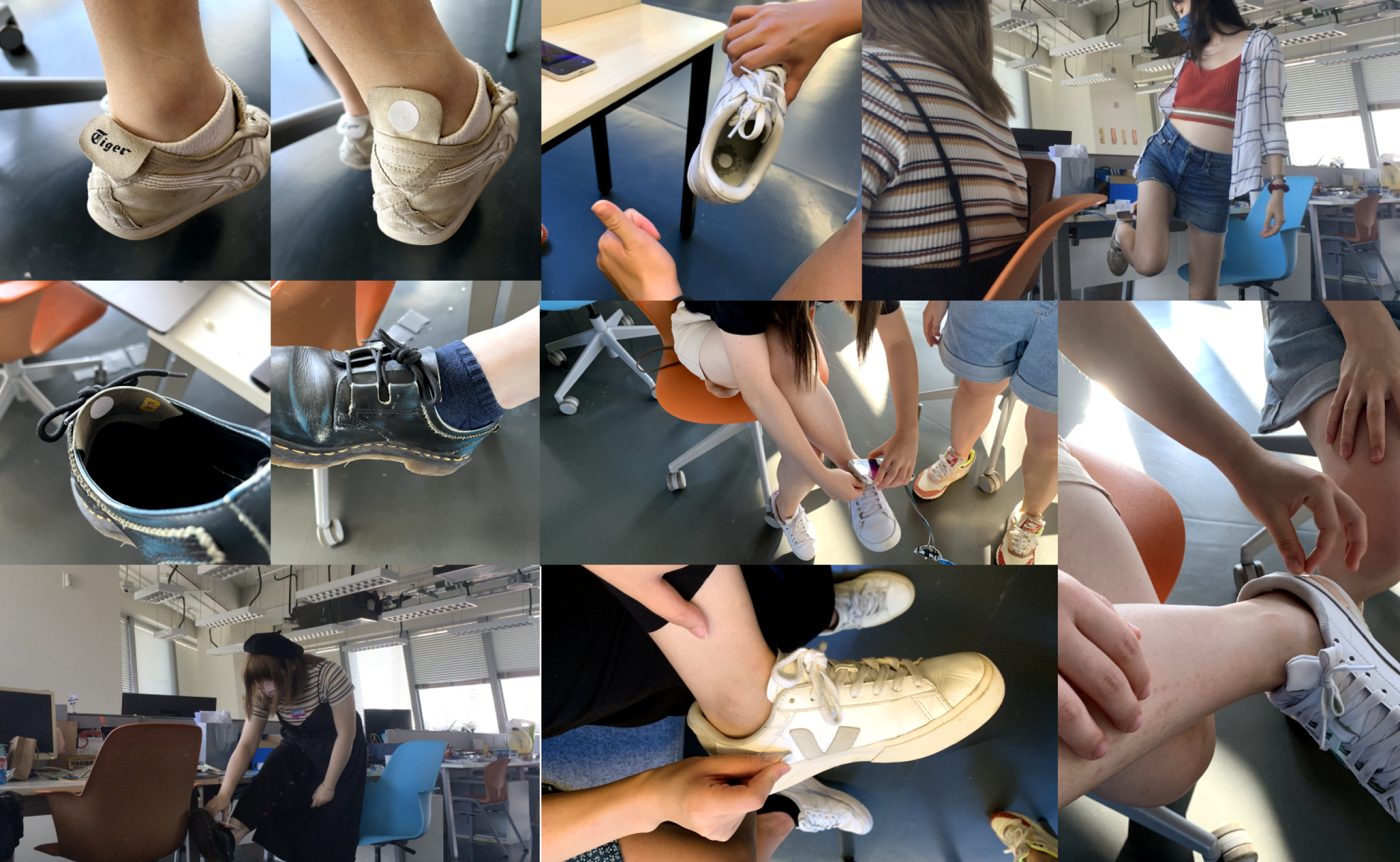
3rd user testing
After refining the final design, we invited some users to join the user testing. We got positive feedback on the final design where all of them agreed that adding materialities to digital shoes can provide a space for reflection to prompt optimized use of resources while motivating them to recycle pre-owned shoes. After three rounds of user testing, we finalized our design concept.

Vision Statement
ShoeRealism envisions enriching materialities on digital objects to provide space for reflection to foster a detachment from physical possessions while prompting optimized use of resources to support product take-back
Design Concept
User journey
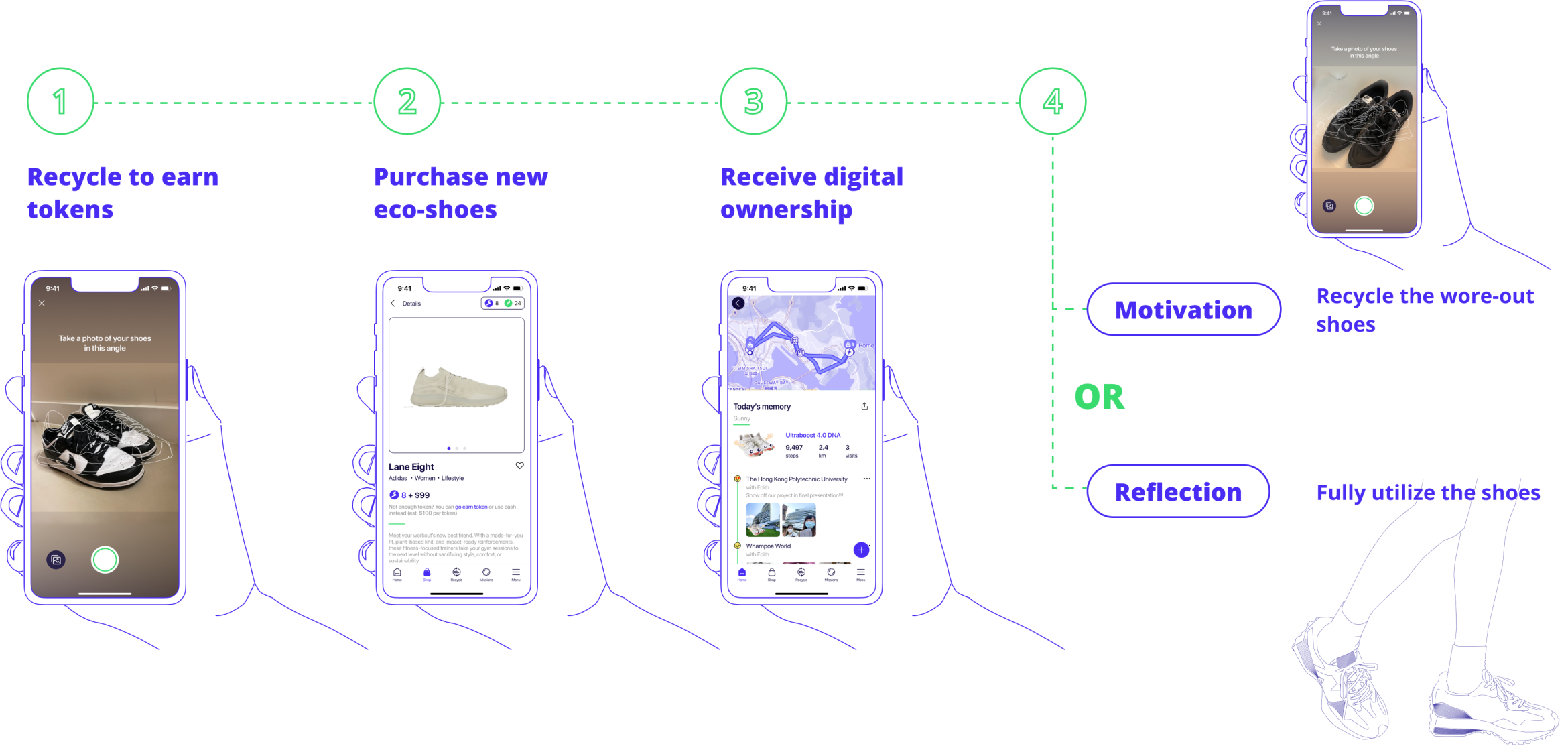
Business model - circular fashion

Prototyping & Testing
Equipment and technology
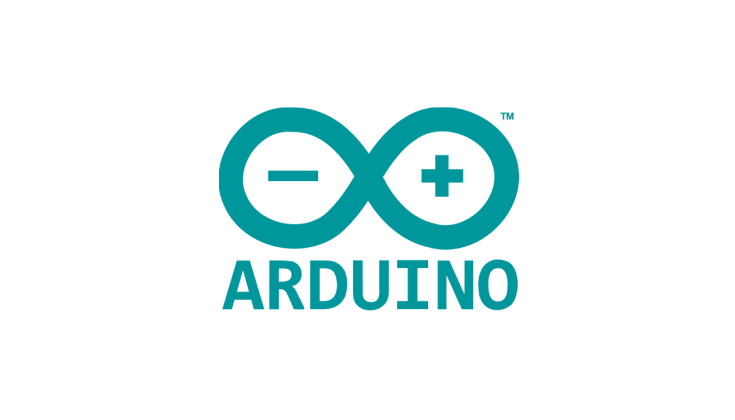

Awards
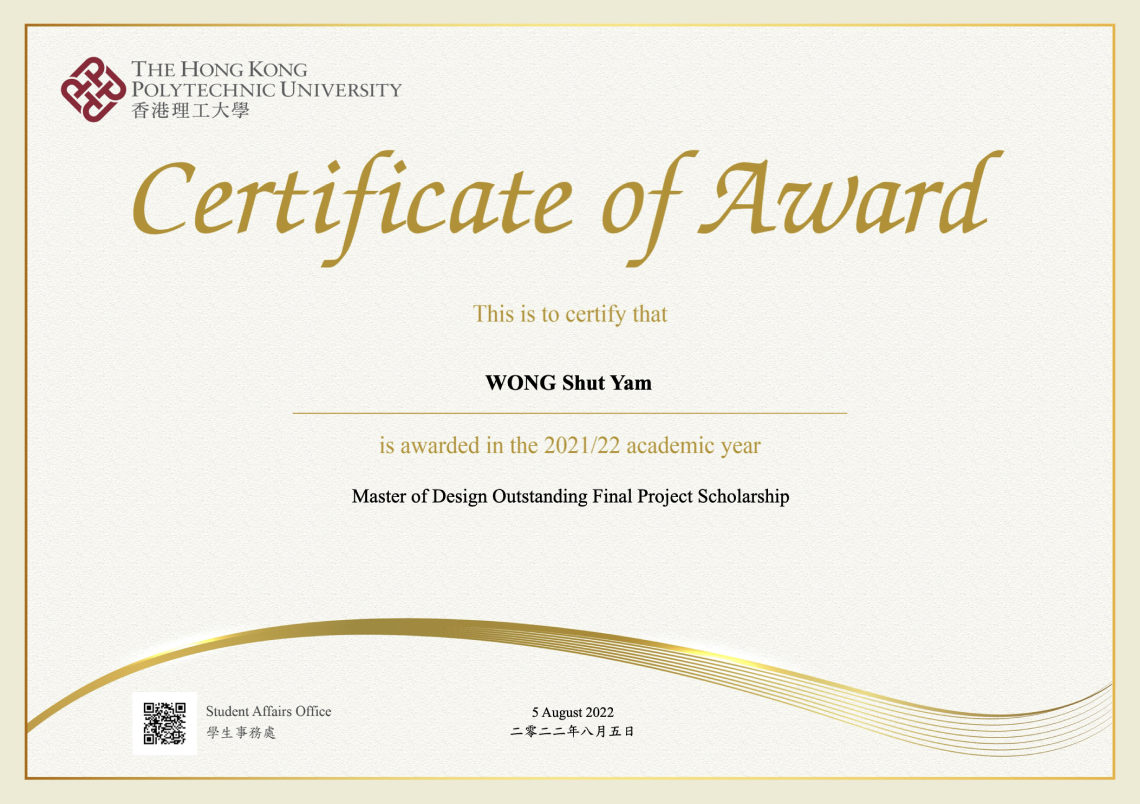
Master of Design Outstanding Final Project Scholarship 2021/22
Issued by The Hong Kong Polytechnic University
This is a group award for the academic excellence projects granted based on academic merit and the project’s potential contribution to society.
View at PolyU websiteShowcase

Reflections
Be flexible to tackle the troubles
In this project, we tried to do the research via interviews and co-design workshops. However, restricted by the rules under COVID, bad weather, and a hectic schedule, it is difficult to invite participants to join our offline activities. We even did not have a feasible place to meet our participants at the beginning. To overcome these restrictions, we tried to seek help from others to borrow a studio for the offline workshop and prepare extra materials for the online interviews. During this project, we got a lot of support and consideration from different people, e.g., rescheduling their plan to fit our timeline, which I greatly appreciate.
Importance of realistic experience with high-fidelity prototype
In our iterative design process, the balance of privacy and convenience was one of the challenges in our design. We did serval rounds of testing for the technology of the sensor. To keep the sensor or not, to make it automatic or not, to embed it in the shoes or not, etc. When participants tested our idea with high-fidelity prototypes instead of just mentioning it verbally, they changed their minds and felt that privacy is less important than convenience. It evidences the importance of prototypes' quality may affect the results and that we should pay more attention to building the prototypes.